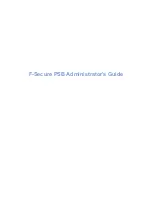
Management Access Security
ExtremeWare XOS 10.1 Concepts Guide
129
Using Policies
After the policy file has been transferred on the switch, it can be checked to see if it is syntactically
correct. Use the following command to check the policy syntax:
check policy <policy-name>
To apply a policy, use the command appropriate to the client. Some examples include:
configure bgp import-policy [<policy-name> | none]
configure bgp neighbor [<remoteaddr> | all] {address-family [ipv4-unicast |
ipv4-multicast]} route-policy [in | out] [none | <policy>]
configure bgp peer-group <peer-group-name> route-policy [in | out] [none | <policy>]
configure ospf area <area-identifier> external-filter [<policy-map> |none]
configure ospf area <area-identifier> interarea-filter [<policy-map> | none]
configure rip import-policy [<policy-name> | none]
configure rip vlan [<vlan-name> | all] route policy [in | out] [<policy-name> | none]
configure rip [vlan <vlan-name> | all] trusted-gateway [<policy-name> | none]
To remove a policy, use the
none
option.
Refreshing Policies
When a policy file is changed (adding, deleting an entry, adding/deleting/modifying a statement etc.),
the new file can be downloaded to the switch and the user must refresh the policy so that the latest
copy of policy will be used.
When the policy is refreshed, the policy file is read, processed, and stored in the server database. Any
clients that use the policy will also be updated. Use the following command to refresh the policy:
refresh policy <policy-name>
Saving Policies
A policy file in the server database can be saved back to a text file. You can save the policy to the
original file name, or save it to a different file name. Use the following command to save the policy:
save policy <policy-name> {<newName>}
Management Access Security
Management access security features control access to the management functions available on the
switch. These features help insure that any configuration changes to the switch can only be done by
authorized users. In this category are the following features:
•
Authenticating Users Using RADIUS or
Authenticating Users Using RADIUS or
ExtremeWare XOS provides two methods to authenticate users who login to the switch:
•
RADIUS
•
Summary of Contents for ExtremeWare XOS 10.1
Page 12: ...12 ExtremeWare XOS 10 1 Concepts Guide Contents...
Page 15: ...Part 1 Using ExtremeWare XOS...
Page 16: ......
Page 20: ...20 ExtremeWare XOS 10 1 Concepts Guide ExtremeWare XOS Overview...
Page 32: ...32 ExtremeWare XOS 10 1 Concepts Guide Accessing the Switch...
Page 74: ...74 ExtremeWare XOS 10 1 Concepts Guide Virtual LANs VLANs...
Page 80: ...80 ExtremeWare XOS 10 1 Concepts Guide Forwarding Database FDB...
Page 112: ...112 ExtremeWare XOS 10 1 Concepts Guide Status Monitoring and Statistics...
Page 133: ...Part 2 Using Switching and Routing Protocols...
Page 134: ......
Page 174: ...174 ExtremeWare XOS 10 1 Concepts Guide Virtual Router Redundancy Protocol...
Page 184: ...184 ExtremeWare XOS 10 1 Concepts Guide IP Unicast Routing...
Page 202: ...202 ExtremeWare XOS 10 1 Concepts Guide Interior Gateway Protocols...
Page 216: ...216 ExtremeWare XOS 10 1 Concepts Guide Exterior Gateway Routing Protocols...
Page 224: ...224 ExtremeWare XOS 10 1 Concepts Guide IP Multicast Routing...
Page 225: ...Part 3 Appendixes...
Page 226: ......
Page 234: ...234 ExtremeWare XOS 10 1 Concepts Guide Software Upgrade and Boot Options...
Page 242: ...242 ExtremeWare XOS 10 1 Concepts Guide Troubleshooting...
Page 256: ...4 ExtremeWare XOS 10 1 Concepts Guide Index of Commands...
















































